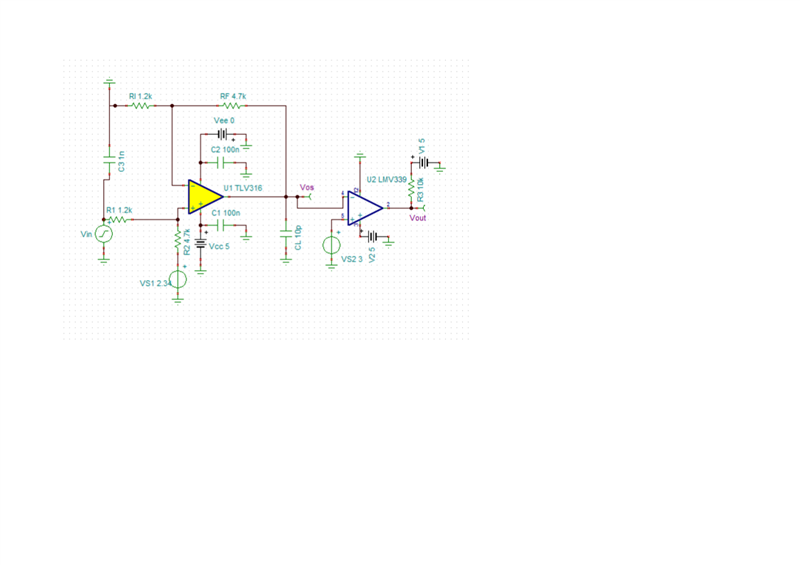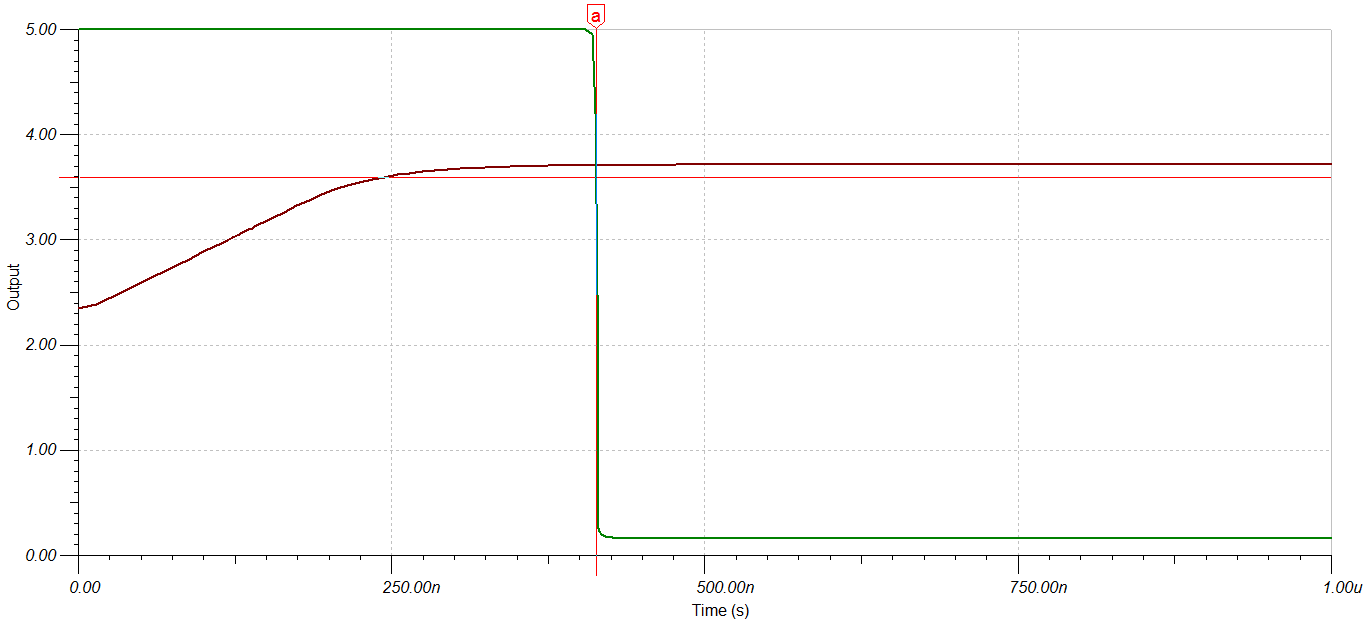Other Parts Discussed in Thread: LM339
Hi,
I have a differential amplifier(TLV4316) whose output is given to a comparator(LM339).
With a 10us input pulse, the simulated output falls to 0 after about 450ns.
However, actual waveform is delayed by approx 3us on the PCB with exactly the same components.
Both, simulation and actual waveforms are attached.
In the actual waveform - Yellow is the input pulse, Blue is the comparator output.
Sorry about the ringing as this was a 80A short circuit.
Please ignore comments in the actual waveform.




